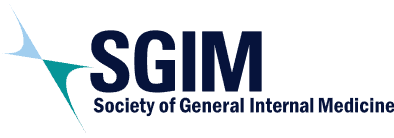Abstract
Background
Unmet social needs (SNs) often coexist in distinct patterns within specific population subgroups, yet these patterns are understudied.
Objective
To identify patterns of social needs (PSNs) and characterize their associations with health-related quality-of-life (HRQoL) and healthcare utilization (HCU).
Design
Observational study using data on SNs screening, HRQoL (i.e., low mental and physical health), and 90-day HCU (i.e., emergency visits and hospital admission). Among patients with any SNs, latent class analysis was conducted to identify unique PSNs. For all patients and by race and age subgroups, compared with no SNs, we calculated the risks of poor HRQoL and time to first HCU following SNs screening for each PSN.
Patients
Adult patients undergoing SNs screening at the Mass General Brigham healthcare system in Massachusetts, United States, between March 2018 and January 2023.
Main Measures
SNs included: education, employment, family care, food, housing, medication, transportation, and ability to pay for household utilities. HRQoL was assessed using the Patient-Reported Outcomes Measurement Information System Global-10.
Key Results
Six unique PSNs were identified: “high number of social needs,” “food and utility access,” “employment needs,” “interested in education,” “housing instability,” and “transportation barriers.” In 14,230 patients with HRQoL data, PSNs increased the risks of poor mental health, with risk ratios ranging from 1.07(95%CI:1.01–1.13) to 1.80(95%CI:1.74–1.86). Analysis of poor physical health yielded similar findings, except that the “interested in education” showed a mild protective effect (0.97[95%CI:0.94–1.00]). In 105,110 patients, PSNs increased the risk of 90-day HCU, with hazard ratios ranging from 1.09(95%CI:0.99–1.21) to 1.70(95%CI:1.52–1.90). Findings were generally consistent in subgroup analyses by race and age.
Conclusions
Certain SNs coexist in distinct patterns and result in poorer HRQoL and more HCU. Understanding PSNs allows policymakers, public health practitioners, and social workers to identify at-risk patients and implement integrated, system-wide, and community-based interventions.
Topic
JGIM
Author Descriptions
Patient-Reported Outcomes, Value and Experience (PROVE) Center, Department of Surgery, Brigham and Women’s Hospital, Boston, MA, USA
Chengbo Zeng PhD, Manraj N. Kaur PhD, Sri Harshini Malapati BS, Jason B. Liu MD, Andrea L. Pusic MD & Maria O. Edelen PhD
Harvard Medical School, Boston, MA, USA
Chengbo Zeng PhD, Manraj N. Kaur PhD, Sri Harshini Malapati BS, Jason B. Liu MD, Allison S. Bryant MD, David W. Bates MD, Nadine J. McCleary MD, Andrea L. Pusic MD & Maria O. Edelen PhD
Division of Surgical Oncology, Department of Surgery, Brigham and Women’s Hospital, Boston, MA, USA
Jason B. Liu MD
Department of Obstetrics and Gynecology, Massachusetts General Hospital, Boston, MA, USA
Allison S. Bryant MD
Office of the Chief Medical Officer, Mass General Brigham, Boston, MA, USA
Allison S. Bryant MD & Peter M. Meyers BS
Division of General Internal Medicine and Primary Care, Brigham and Women’s Hospital, Boston, MA, USA
David W. Bates MD
Clinical and Quality Analysis, Information Systems, Mass General Brigham, Boston, MA, USA
David W. Bates MD
Department of Medical Oncology, Dana-Farber Cancer Institute, Boston, MA, USA
Nadine J. McCleary MD
Division of Plastic and Reconstructive Surgery, Department of Surgery, Brigham and Women’s Hospital, Boston, MA, USA
Andrea L. Pusic MD
Share
Related Articles
Perspectives of In-Hospital Intramuscular Naltrexone and Oral Medications for Alcohol Use Disorder: A Study of Addiction Clinicians and Hospitalized Patients
Abstract Background Alcohol-related hospitalizations are rising; however, medications for alcohol use disorder…
Beyond Workarounds: Enhancing Education, Care, and Wellness on Inpatient Medicine Rotations—A Multicenter Qualitative Study
Abstract Background Inpatient medicine rotations (IMRs) aim to deliver exceptional clinical education…


